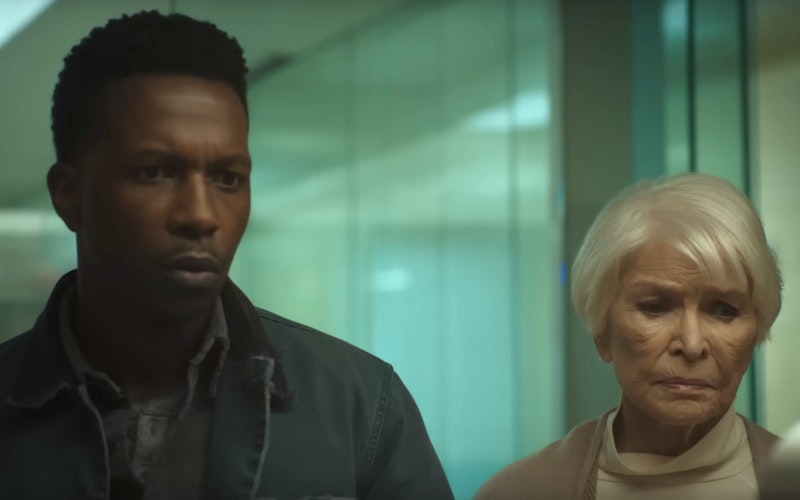
Movies
The Exorcist: Believer's Fickle Faith
With The Exorcist: Believer, the infamous horror franchise has declared itself—like so many others these days—to be spiritual but not religious.
Director David Gordon Green’s new film, a direct sequel to 1973’s The Exorcist, clearly has deconstruction on its mind. It aims to dismantle the seemingly dated ideologies of its predecessors, no matter the cost. Green did this to a certain degree with his recent Halloween trilogy, but he takes the deconstruction to a new level here. In its attempt to feel relevant to the times, The Exorcist: Believer forgoes the explicitly Christian themes of the original in favor of a more universalist, morally relativistic approach. In its own way, the movie succeeds in reflecting the current state of society; both our world and the film are philosophically and spiritually confused.
When The Exorcist came out in 1973, America was reeling from numerous crises. The war in Vietnam, racial strife, and social unrest left people unsettled and uncertain. Religion, specifically Christianity, still held its ground in the culture at the time: 90% of Americans identified as Christian, while the Jesus movement had swept through the land in the late 1960s and early 1970s, making Christianity relevant to a younger generation. This combination of systemic evils springing forth alongside a reinvigorated interest in the spiritual became the perfect storm for The Exorcist, adapted by William Peter Blatty from his own novel and directed by William Friedkin. Revolving around the demonic possession of a young girl, The Exorcist asks inherently spiritual questions about the role of religion in society.
While many Christians rejected The Exorcist for its portrayal of demonic possession, profanity, and violence, savvy watchers connected the film’s Christological dots. Father Karras (Jason Miller), the Catholic priest suffering a crisis of faith, undergoes a “skeptic to believer” character arc, finally embracing the ultimate role of Christ figure when he sacrifices himself to save young Regan (Linda Blair), inviting the demon to take him instead. Despite its darkness, the film affirms that heaven’s forces prevail in the end.
The Exorcist: Believer, on the other hand, seems hell-bent on exorcizing its predecessor’s theology. Structurally speaking, the sequel follows the original quite closely. This time two girls, Angela (Lidya Jewett) and Katherine (Olivia O’Neill), are possessed by the same spirit that haunted Regan 50 years earlier. Angela’s father, Victor (Leslie Odom Jr.), experiences his own loss of faith after the death of his wife in Haiti 13 years earlier.
Like the culture it finds itself in, The Exorcist: Believer takes a morally relativistic, “whatever works for you” approach to religion. The movie is trying to reach an audience that is no longer as religious as previous generations; now only 63% of the American population identifies as Christians, with many preferring to be considered “nones” (religiously unaffiliated) instead. The decline in these numbers and the moral confusion plaguing society are certainly linked.
Both our world and the film are philosophically and spiritually confused.
The Exorcist: Believer follows this line, as the moral confusion in its subtext eventually bleeds into the text, especially during a chaotic and incoherent third act. (Spoilers ahead.) Katherine’s family’s Baptist pastor, a rootwork priestess Victor knew in Haiti, a Pentecostal preacher, and, eventually, the obligatory Catholic priest all band together to perform the climactic exorcism. While Green utilizes a small living room set piece for the finale to create a sense of closed-space tension and the blend of practical makeup work and CGI does make the possessed children haunting to behold, the incongruity of the movie’s message leaves this entire sequence feeling hollow. The assembly of religious figures could have served as an interesting push for Christian nondenominationalism, but instead the movie throws at the audience a series of misdirections, leaving each religious leader unable to eradicate the demonic spirit. Only through Angela’s connection with her deceased mother (represented symbolically by a purple scarf that Angela wears, one that belonged to her mother) does the spirit finally flee, though not before inflicting considerable costs.
This climax feels convoluted because the filmmakers seemingly want to mix in a form of human mysticism with the series’ already established Christian ideas. Throughout the film are lines that attempt to downplay the role of Christianity and build up an idea that any force of “good” can help combat the nature of evil. This mindset confuses the film just as it confuses society. What happens when one idea of the good contradicts another? What is the standard for what goodness truly is? Do all roads truly get us to heaven? The film feels more occupied with pleasing everyone than asking hard, philosophical questions.
These two films, if nothing else, reveal the change in America’s overall religious views. The Exorcist can be summarized by one straightforward, iconic line recited by the character of Father Merrin (Max von Sydow): “The power of Christ compels you!” The Exorcist: Believer similarly gives away its thesis through a quote from Chris MacNeil (Ellen Burstyn, returning from the original film): “Exorcism is real. Every culture, every religion, they all use different methods. It’s going to take all of them.” In a changing world that believes all roads lead to salvation, it is more important now than ever to remember the words of Jesus: “I am the way, the truth, and the life. No one comes to the Father except through me.”
Topics: Movies